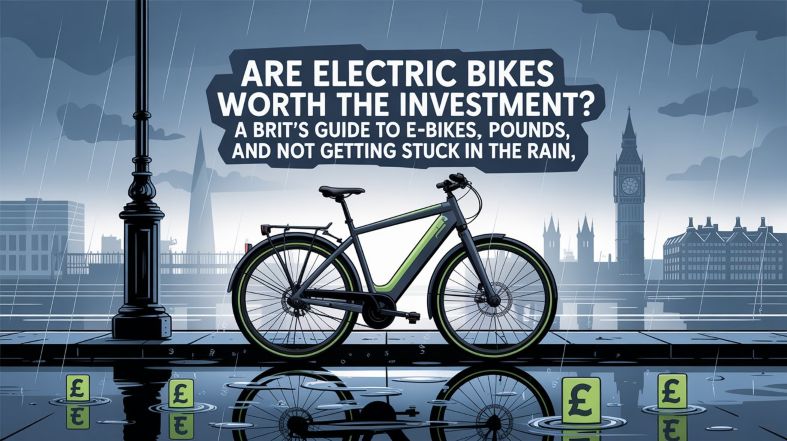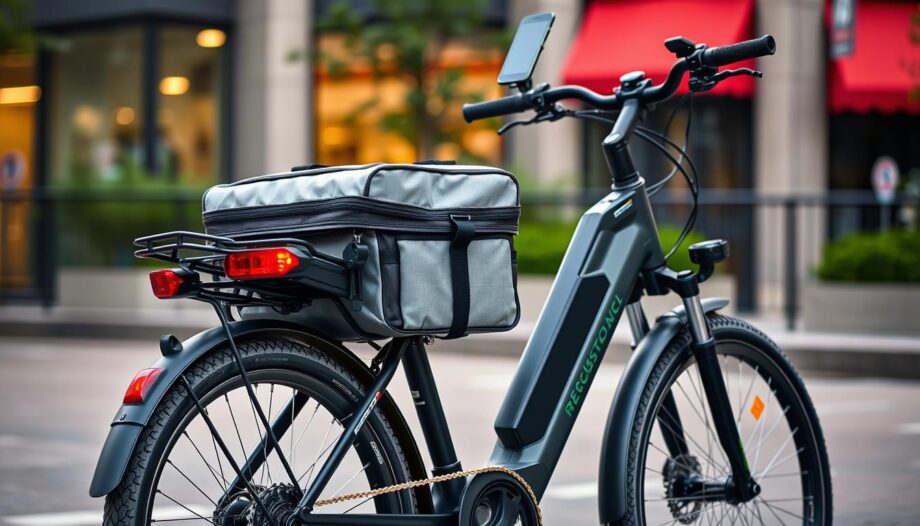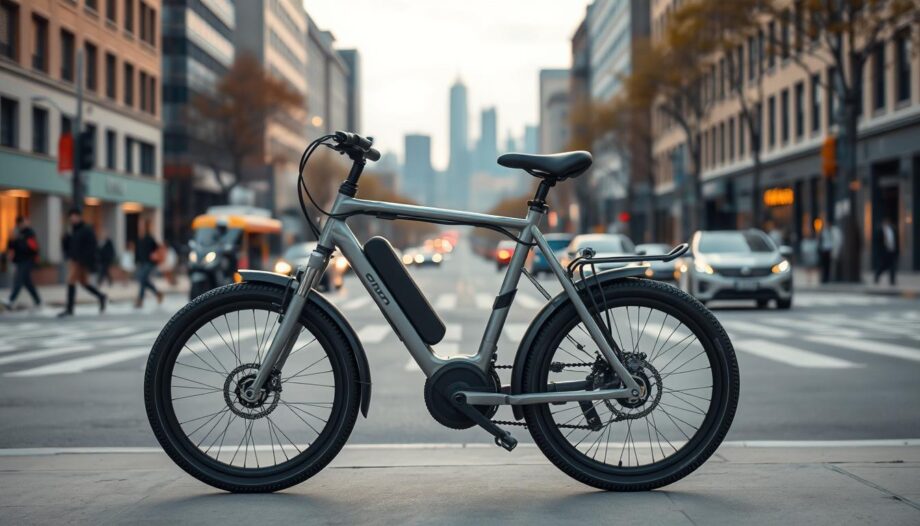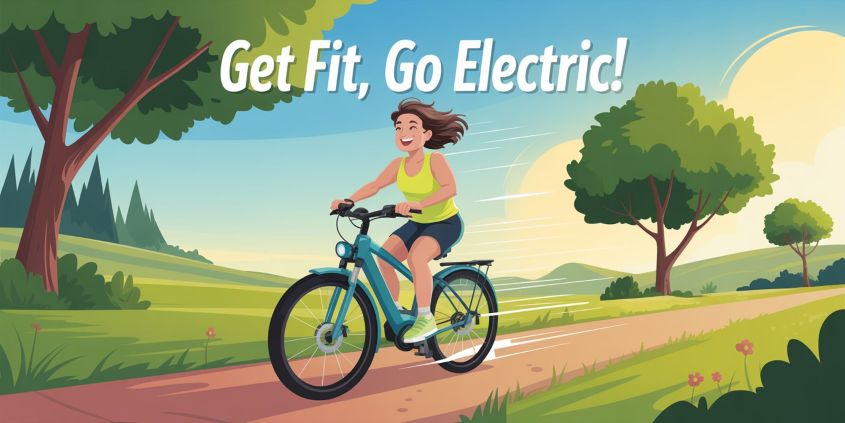- Beginning of Bicycle
- Evolution of the Electric Bicycle
- Who Invented It?
- E-Bikes in the ’90s and 2000’s
- What Are Some of the Key Inventions That Have Made Electric Bikes Possible?
- What Were the Technological Advances?
- How Have Electric Bikes Changed Over Time?
- What is the Future of Electric Bikes?
- Final Thoughts
Enjoying the stunning views by paddling your favorite Ebike is a different kind of fun. You can access trails, mountains, and different places on bikes that are inaccessible to cars. If you love beautiful, breathtaking views, you’ll love cycling, if it is even amazing for those looking for a form of aerobic exercise.
In the last few years, due to technological advancements, e-bikes have made a significant part of the bicycle market. Many people have said that their eBike has reignited their passion for cycling.
The word ebike has been in common use since the early 2000s, but do you know how it all started? Well, to get all your answers, just keep reading this blog, as I have done extensive research and have compiled the best information for you. In this blog, we will cover all the topics briefly. So, without further ado, let’s jump into the history of electric bikes.
Beginning of Bicycle
The electric bikes of this generation were vastly different from history. The high-wheeler was popular at that time. It had a giant front wheel while the rear wheel was tiny and it had no chain. The rider can expect to travel a considerable distance with just one rotation of their legs because the pedals were fixed to the wheel, and there was no geared option. These bikes are totally unsafe to ride. If you were not a professional, you could easily fall from seat to floor, often 6 feet or more.
In fact, electric bicycles that could be considered safe didn’t arrive until 1990. It was then that the first wave of standard electric bikes with two equal-sized wheels started arriving. But it was only possible due to two key innovations in the motor and battery department. Without this, it would have been impossible for electric bikes to innovate at such a staggering speed. But before I begin with these technical advancements, let’s first go through the brief evolution of electric bikes and their inventors.
Evolution of the Electric Bicycle
Electric bike history stretches back almost 130 years! And in the decade before the electric bicycle, there were forward thinkers experimenting with electrically powered tricycles. It all began with two people, Gustave Trouvé, and Trouvé Tricycle. Their history can be traced from all the patents they submitted to the US patent office. Although these two men started it, there are many whose contributions have made the concept a reality. Let’s take a look at some of the popular inventors of different bicycles.
Who Invented It?
- Gustave Trouvé and The Trouvé Tricycle (1881)
Gustave Trouvé wanted to experiment with a tricycle and electric power to see what could be achieved. So, he installed an electric motor on an existing tricycle built by a British company.
- Monsieur Graffigny and The Graffigny Tricycle (1891)
This tricycle was tested at a speed of 12mph and covered a total of 50 miles, which was very impressive back then. It took around 2.5 hours to achieve the target distance of 50 miles.
- Ogden Bolton, Jr and The Direct-Drive Rear Hub Motor (1895)
This is an electric bike that has a rear-mounted hub motor, similar to what I see now in many of our electric bikes.
- Charles Theryc and The Planetary Geared Hub Motor (1896)
Basically, it’s similar to Bolton’s rear hub motor electric bike, but it had some form of gear mechanism and was faster than the wheels connected to it. This geared motor implementation was quite the head-turner.
- H.W. Libbey of Boston (1897)
This is a mid-drive electric bike and it has ditched the implementation of pedals completely. It had a chained gear system providing greater power and speed.
- John Schnepf and The Friction-Drive Motor (1899)
Unlike other electric bikes, this one is quite different. This form of the motor had a roller that brushed against the rear tire to drive forward. It used friction to move ahead.
E-Bikes in the ’90s and 2000’s
- The Humber Electric Tandem
Displayed for the first time in the year 1897, it was first put to use in the year 1899 on the Bol d’Or race track where the bike lasted 24 hours from the battery that was attached.
- The Phillips-Simplex Electric Bike
This electric bike was submitted by Phillips for production sometime in 1932 in partnership with Simplex. It used a 12v battery to power the motor.
- The Juncker Electric Bike
Unveiled in the 1930s, this electric bike could be ridden for 40 km with a top speed of 2.5km. It would take an entire day to recharge the battery and it was geared to fail.
- Yamaha PAS
The Yamaha PAS invented a completely new category of personal vehicle and was the world’s first electrically powered bicycle that was simple to use. It gives you an appropriate amount of power from an electric motor. As a result, you can ride it with heavy loads.
What Are Some of the Key Inventions That Have Made Electric Bikes Possible?
- Electric Motor
The electric motor is what keeps the wheels rotating and is one of the key components of an electric bike. Depending on the electric power this monitor can feed on, the speed would greatly adjust to its needs and requirements. Innovation in the monitor comes from efficiency and design choices., both hub and mid drive motors.
- Battery
There are two types of major battery technology: Lead Acid batteries and Lithium-Ion batteries. Lead Acid batteries are cheaper but can hold only about 500 – 1000 cycles, whereas Lithium-ion batteries provide easier usage and last for up to 2000 cycles. Its only downside was its unusually higher production cost, as the lithium used in this type of battery had to be mined from underground.
What Were the Technological Advances?
- Sensors and Microelectronics
Most modern bikes have a multitude of sensors and microelectronics that help the rider determine the battery status, battery temperature, engine temperature, and battery health, among others.
- Pedal Assist
Pedal Assist was given to ensure the motor only gets power when the user pedals. Basically, it’s a throttle mechanism, which allows it to conserve power and use it when necessary.
- Battery charge time and quantity
Lithium-ion batteries are totally rechargeable and will require only almost three to five hours to charge fully from empty. Although you can buy a fast charger if you want to travel long distances, as a result, it will save you time. Modern e-bikes allow two batteries at once. If one is dead, then you have a backup.
- Frame
Frame material and design, along with the size of the motor and battery, are the biggest contributors to the success of the e-bike. The majority of e-bike frames are constructed of aluminum. As a result, the bikes are lightweight and most likely offer a better ride. Although the full range of steel and carbon fiber are also available as frame alternatives.
How Have Electric Bikes Changed Over Time?
Due to technological innovations, electric bikes have changed drastically in their design as well as their performance. There were many experimental designs with different front and rear wheel sizes, different motor positioning, and much more. It started as a concept and has become a reality now.
It all started to fill the need for horseless transport. A wooden vehicle that was straddled and propelled by walking swiftly called a “running machine” was converted into a bicycle and then an E-bike.
Currently, the best electric bikes have a brain like a smartphone that can process information from a variety of sensors – speed, cadence (pedal rotations per min), and torque (the force applied to the pedals). Nowadays, it is also equipped with different modes in which you allow the controller to apply power in just the right amount, at the right time, for the experience to feel seamlessly natural.
What is the Future of Electric Bikes?
The sheer number of electric bikes sold till now presents a very clear picture that there’s high demand for electric bikes. This is mostly due to added pressure from the government, environmentalists, and NGOs, who are pushing for greener initiatives such as electric vehicles instead of fossil fuel-based vehicles.
And most companies are taking sustainable measures to reduce the emissions of carbon and plastic waste. Hence, the number of people adopting electric bikes is now greater than ever, and, with future innovations, the adoption is expected to increase even further. Indirectly, they are saving the environment.
Today, worldwide production of electric bicycles is on the steady rise and gaining rapid sales growth. Today, it is estimated that there are over 120 million electric bicycles sold in China alone. The use of electric bicycles in Europe and North America is also growing fast, with reported yearly sales of 1.8 million units.
Final Thoughts
They are environmentally friendly, which is one of the most appealing features of electric bicycles, as they do not contribute to air pollution. Plus, they are quiet and really efficient, meaning they are really good for urban areas. But you have to take all the safety concerns while riding in traffic. So if you are investing in e-bikes, you are simply saving our Earth. These days, e-bike production and sales are growing rapidly and becoming a trend. So what are you waiting for? Go get your favorite e-bike now. And stay with us for all the latest updates on e-bikes.
[starbox]





